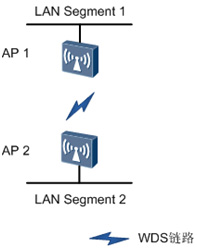Huawei AP5030DN and AP5130DN performance-enhanced 802.11ac APs deliver high-capacity, secure WLAN access services for dense, wide-area user environments such as offices, airports, trains, and sports stadiums.
Consult
1.Overview
Huawei AP5030DN and AP5130DN performance-enhanced 802.11ac APs deliver high-capacity, secure WLAN access services for dense, wide-area user environments such as offices, airports, trains, and sports stadiums.
These APs operate in Fat or Fit mode and offer 3 x 3 MIMO technology (three spatial streams) for wireless data rates up to 1.75 Gbit/s, ensuring lightning-fast downloads and uploads plus outstanding video streaming. Multiple authentication and encryption modes work with advanced user access controls to secure the network.
Connect with Huawei 802.11ac APs for demanding Wi-Fi services today and tomorrow.
2.Features
3. Speciciation
|
Specifications |
AP5030DN |
AP5130DN |
|
Dimensions (H x W x D) |
220 mm x 220 mm x 53 mm |
220 mm x 220 mm x 53 mm |
|
Power Input |
12V DC ±10% PoE: –48V DC (in compliance with IEEE 802.3af/at) |
12V DC ±10% PoE: –48V DC (in compliance with IEEE 802.3af/at) |
|
Maximum Power Consumption |
12.95W |
12.95W |
|
Operating Temperature |
–10°C to 50°C |
–10°C to 50°C |
|
Antenna Type/Antenna Gain |
Built-in antenna/2.4 GHz: 4 dBi, 5 GHz: 5 dBi |
Removable RP-SMA antenna/2.4 GHz: 3.5 dBi, 5 GHz: 4 dBi |
|
Maximum Number of Users |
≤ 256 |
≤ 256 |
|
Maximum Transmit Power |
25 dBm (combined power) |
25 dBm (combined power) |
|
MIMO: Spatial Streams |
3 x 3:3 |
3 x 3:3 |
|
Radio Protocol |
802.11a/b/g/n/ac |
802.11a/b/g/n/ac |
|
Maximum Speed |
1.75 Gbit/s |
1.75 Gbit/s |
The AP provides 802.11n/ac wireless access networks for small, simple buildings with a dense user footprint and high capacity demands, such as small and medium enterprises and branch offices. The AP can be flexibly deployed and works in both Fit AP and Bridge mode.
The AP can work as a Fat AP or Fit AP and switch flexibly between the two modes based on the network plan.
When the wireless network scale is small, customers need to purchase only AP products and set the APs up as Fat APs. As the network expands, tens or hundreds of APs can be added to the network. To simplify network management, customers should buy wireless Access Controllers (ACs) to perform centralized management on the APs and set up the APs as Fit APs.

In this example, the AP functions as a Fit AP and provides only data forwarding functions. The AC is responsible for user access, AP going online, AP management, authentication, routing, security, and QoS.

In this network, the AP connects two or more independently wired or wireless LANs through wireless links to construct a data exchange network. In Wireless Distribution System (WDS) mode, the AP supports point-to-point (P2P) and Point-to-Multipoint (P2MP) networking modes. With 5 GHz and 2.4 GHz frequency bands, the AP can implement wireless bridging and access functions.
